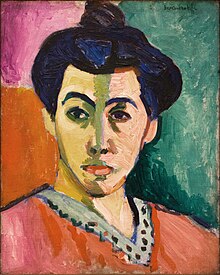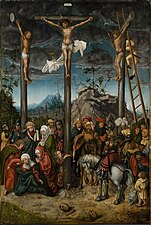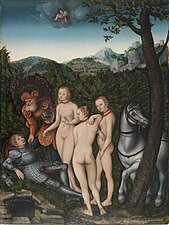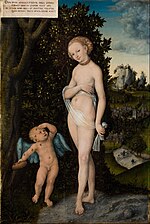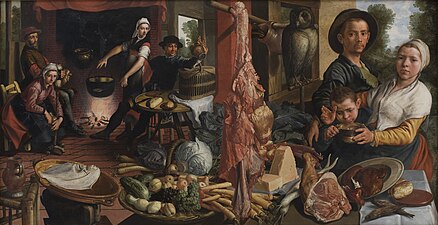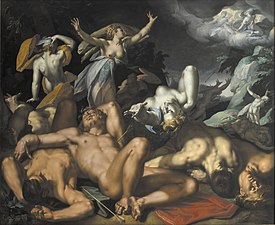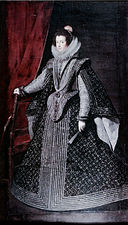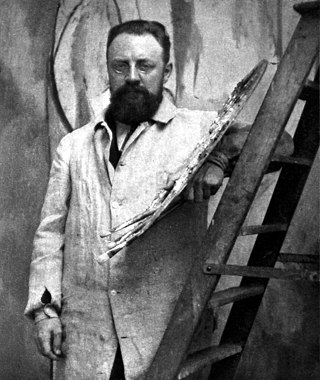
Henri Émile Benoît Matisse was a French visual artist, known for both his use of colour and his fluid and original draughtsmanship. He was a draughtsman, printmaker, and sculptor, but is known primarily as a painter. Matisse is commonly regarded, along with Pablo Picasso, as one of the artists who best helped to define the revolutionary developments in the visual arts throughout the opening decades of the twentieth century, responsible for significant developments in painting and sculpture.

The National Museum of Art of Romania is located in the Royal Palace in Revolution Square, central Bucharest. It features collections of medieval and modern Romanian art, as well as the international collection assembled by the Romanian royal family.

Wilhelm Ferdinand Bendz was a Danish painter mainly known for genre works and portraits which often portray his artist colleagues and their daily lives. He was one of the most talented artists in the successful generation of painters who studied under Christoffer Wilhelm Eckersberg but died early and has therefore left a relatively small oeuvre.
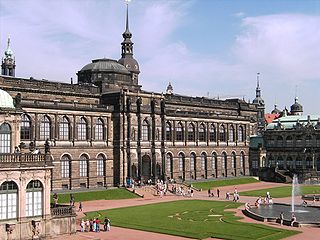
The Gemäldegalerie Alte Meister in Dresden, Germany, displays around 750 paintings from the 15th to the 18th centuries. It includes major Italian Renaissance works as well as Dutch and Flemish paintings. Outstanding works by German, French, and Spanish painters of the period are also among the gallery's attractions.

Laurits Andersen Ring was one of the foremost Danish painters of the turn of the 20th century, who pioneered both symbolism and social realism in Denmark. Considered one of the masterpieces of Danish culture, his painting Summer Day by Roskilde Fjord was included in the 2006 Danish Culture Canon.
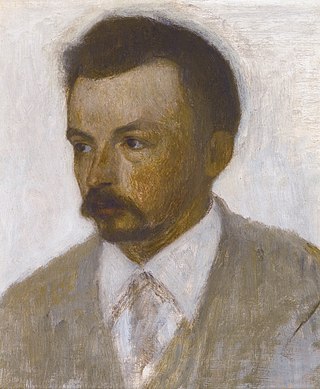
Vilhelm Hammershøi, often anglicised as Vilhelm Hammershoi, was a Danish painter. He is known for his poetic, subdued portraits and interiors.

Cornelis Norbertus Gijsbrechts or Gysbrechts was a Flemish painter who was active in the Spanish Netherlands, Germany, Denmark and Sweden in the second half of the seventeenth century. He was a court painter to the Danish royal family. He specialised in trompe-l'œil still lifes, an artistic genre which uses visual tricks to give viewers the illusion that they are not looking at a painting but rather at real three-dimensional objects. He also created many vanitas still lifes.
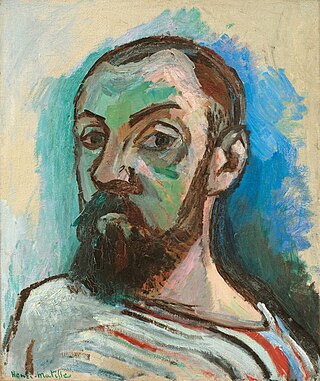
Self-Portrait in a Striped T-shirt (1906) is an oil on canvas painting by Henri Matisse from his Fauvism period, in the collection of Statens Museum for Kunst, Copenhagen, Denmark.

Jens Vilhelm Dahlerup was a Danish architect who specialized in the Historicist style. One of the most productive and noted Danish architects of the 19th century, he is behind many of the most known buildings and landmarks of his time and has more than any other single architect contributed to the way Copenhagen appears today.

The Bucerius Kunst Forum is an international exhibition centre in Hamburg, Germany, founded in 2002 through the ZEIT-Stiftung Ebelin und Gerd Bucerius foundation. It is named after Gerd Bucerius and his wife, and located directly beside the Hamburg Rathaus. The exhibition centre shows 3 - 4 exhibitions per year, in co-operation with other museums and collections. The exhibition centre participates in the Long Night of Museums.

Fauvism is a style of painting and an art movement that emerged in France at the beginning of the 20th century. It was the style of les Fauves, a group of modern artists whose works emphasized painterly qualities and strong colour over the representational or realistic values retained by Impressionism. While Fauvism as a style began around 1904 and continued beyond 1910, the movement as such lasted only a few years, 1905–1908, and had three exhibitions. The leaders of the movement were André Derain and Henri Matisse.
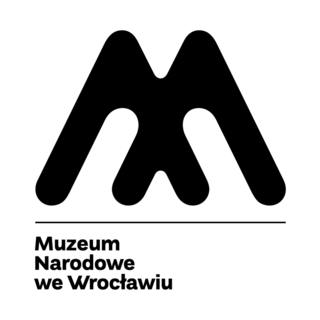
The National Museum in Wrocław, established 28 March 1947 and officially inaugurated on 11 July 1948, is one of Poland's main branches of the National Museum system. It holds one of the largest collections of contemporary art in the country.

Randers Museum of Art is a Danish art museum in Randers in northeastern Jutland, Denmark. The museum is located in the cultural centre of Kulturhuset in the town centre and displays many of the major works of Danish painters, especially those of the 19th and 20th centuries.

Johan Gudmann Rohde was a Danish painter, lithographer and designer. He was the principal founder of Den Frie Udstilling, established in 1891 to allow artists to exhibit works which did not fall within the Academy's selection criteria.

Anna Sophie Petersen was a Danish painter. Although she showed some promise as an artist, specifically in genre painting, she struggled to find a place in the male-dominated Danish art world of the late 19th and early 20th centuries. Her work fell out of fashion and she was largely forgotten until the end of the 20th century when the Hirschsprung Collection and Statens Museum for Kunst acquired some of her more important works.
Lene Adler Petersen is a Danish artist. Her artistic practice is characterized through a continuous collecting, sorting and mixing process of media and techniques and includes happenings and performance art as well as painting, ceramics, drawings, printmaking and installations, film and photography.

A Nude Woman Doing her Hair before a Mirror is an oil painting from 1841 by the Danish Golden Age painter CW Eckersberg. The painting is in the Hirschsprung Collection in Copenhagen. The relatively small image is regarded as one of the masterpieces of the Danish Golden Age, and is also one of the Hirschsprung Collection's 20 most important works.

The Reverse of a Framed Painting is a still life trompe-l'œil painting by Flemish painter Cornelius Norbertus Gysbrechts, made in 1670, when the artist was working as the official painter of the Danish royal court. The painting is commonly considered a masterpiece of trompe-l'œil painting for its deceptively sculptural representation of the back of a framed painting in a canvas.
Hanne Finsen was a Danish art historian and museum director who had a special interest in French art. While at the National Gallery of Denmark, in 1970 she arranged the internationally acclaimed Henri Matisse retrospective. In 1978, she was appointed director of both the Hirschsprung Collection and the Ordrupgaard Collection. At Ordrupgaard, she presented a number of exhibitions, including those on Vilhelm Hammershoi and Édouard Manet. In 2005, in collaboration with the Musée du Luxembourg, Finsen presented "Matisse – A Second Life" at the Louisiana Museum of Modern Art, an exhibition focusing on the painter's later works.
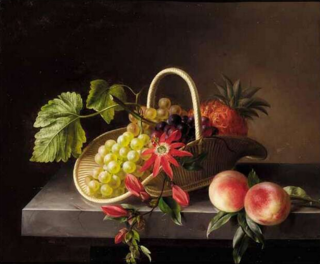
Johanne (Hanne) Hellesen (1801–1844) was a Danish painter who was trained privately under Johan Laurentz Jensen as women had not yet been admitted to the Royal Danish Academy. She is recognized as one of the most successful female flower painters of her times. Some of her works were purchased by the Danish Royal Collection of Paintings, two for Kronborg and two for Fredensborg Palace. Others are in the collection of Statens Museum for Kunst.


